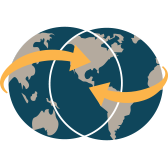Nowhere are the needs for progress in delivery of public services more urgent than in the field of education. According to UNESCO, the national adult literacy rate for Pakistan is just under 54 percent, fully 10 percent lower than the average in south and west Asia. The literacy rate is even worse for women, at just under 40 percent, and in the tribal areas along the Afghan border as few as three women in a hundred can read. Funding for education at all levels comprises just 2.4 percent of the national economy, and when foreign aid is stripped out the figure is just 1 percent, according to UNICEF.9
Ironically, education has received enormous attention from foreign and private-sector donors in Pakistan. The United States has made primary education a centerpiece of its promised social-sector aid package. Our visit to Lahore coincided with a high-society fund-raiser for the Citizens Foundation, a private charity that since 1995 has opened 311 schools in urban slums and rural areas, educating 38,000 students and employing 2,400 teachers. The American mountain climber Greg Mortenson’s success in establishing some 45 schools in Pakistan’s mountain areas has been celebrated in the United States as an example of how consultation with local communities can lead to rapid improvements.10
Ordinary Pakistanis also place a high value on education. Abbas Rashid, convener of a network of educators called the Campaign for Quality Education, argued that the “huge social demand for education is seen in the phenomenon of the private schools,” which proliferate in rural areas and in cities. “People go to some amazing lengths to educate their children,” he said. But he also noted that there is a 30 to 40 percent dropout rate “when parents sense there is no delivery taking place.”
Nayyar, who has written extensively on education, cautioned that formal education primarily benefits students who receive university degrees and are able to enter professions. Most Pakistani young people, however, receive less than a high-school education. Nevertheless, Pakistani youth want to study: A national survey of adolescents conducted shortly after September 11, 2001, by Sathar and others at the Population Council found that 85 percent of boys wanted to study through high school or university, while 69 percent of girls aspired to at least a high-school diploma.11
The demand for education among Pakistanis extends throughout Pakistani society and all of its provinces. Meeting that demand would give Pakistanis a real stake in their society, and this in turn would undermine the utopian alternatives provided by political Islam. In supporting educational development, the United States should listen closely to Pakistani educators. Particularly, the justified emphasis on primary education should not preclude support for higher education. Pakistani universities train the teachers who teach in the country’s primary schools and they need to be supported, too.
Previous: Economic Progress Requires Social Development
Next: Rule of Law Is a Top Priority
9 The literacy rate figures are at: http://stats.uis.unesco.org/unesco/TableViewer/document.aspx?ReportId=121&IF_Language=eng&BR_Co untry=5860&BR_Region=40535. The figures for overall education expenditure are from the Campaign for Quality Education’s “Education in Pakistan: What Works & Why,” September 2007, http://www.soros.org/initiatives/esp/articles_publications/publications/pakistan_20070918, and the figures for government expenditure on education are at: http://www.unicef.org/infobycountry/pakistan_pakistan_statistics.html#48.
10 See Greg Mortenson and David Oliver Relin, Three Cups of Tea: One Man’s Mission to Fight Terrorism and Build Nations . . . One School at a Time (New York: Viking, 2006).
11 See Campaign for Quality Education, “Education in Pakistan: What Works & Why,” September 2007, http://www.soros.org/initiatives/esp/articles_publications/publications/pakistan_20070918, and Zeba A. Sathar et al., Adolescents and Youth in Pakistan 2001-2002: A Nationally Representative Survey, Islamabad: Population Council, 2003, http://www.popcouncil.org/pdfs/ayp0102.pdf.

